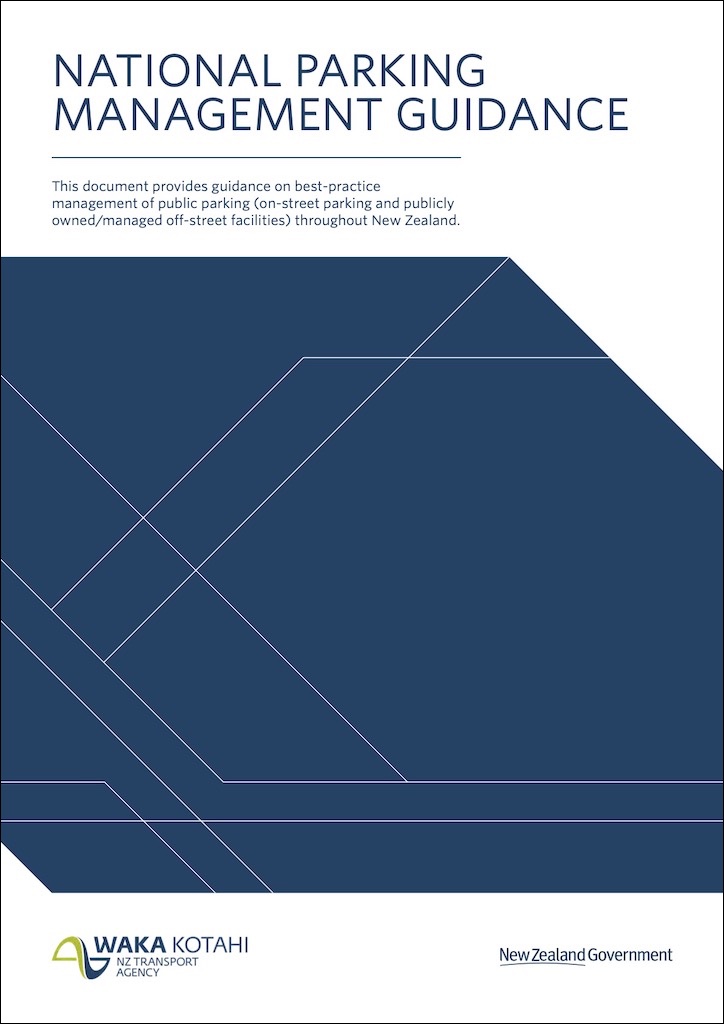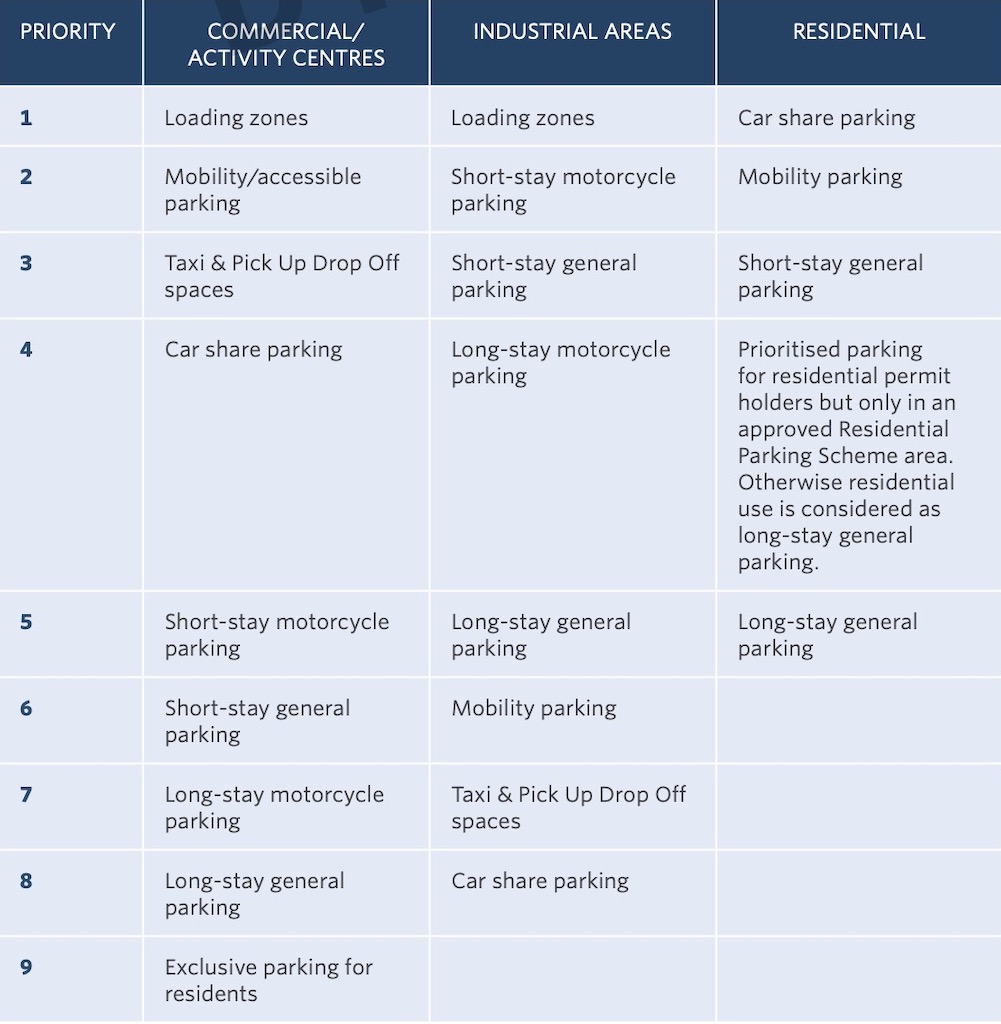The New Zealand Transport Agency (NZTA) has released guidance on parking management, for community consultation.

As our cities and towns grow there is increasing competition for space on our roads and streets. This results in a growing need to increase the use of public transport, walking and cycling, and for our streets to be inviting public spaces. Well-managed public parking can positively contribute to the transformation of urban environments into safer, more vibrant, sustainable, and equitable places with better housing and travel choices. Equally, poor parking management can undermine these goals.
NZ National Parking Management Guidance
Good management of public parking is a crucial component of the overall transport system, and essential for creating vibrant and well-functioning urban areas.
NZ National Parking Management Guidance
Parking availability and pricing is a key aspect of travel decision making and can fundamentally influence travel behaviour. Strategic parking management can support (or hinder) uptake in a range of travel modes, which can, in turn, impact on demand for the parking supply.
NZ National Parking Management Guidance
While parking can contribute towards the success of a place, poorly managed and designed parking can undermine efforts to create highly liveable urban areas by: Subsidising and encouraging excessive demand for car-based travel, leading to congestion, increased vehicle emissions and poorer public health, as well as undermining investment in public transport and walking and cycling infrastructure.
NZ National Parking Management Guidance
The guidance identifies 8 key principles of parking management:
- Prioritise public space to deliver the highest value.
- Efficiently use space dedicated to parking.
- Prioritise those with the greatest need for parking.
- Equitably pay for the costs of parking provision.
- Ensure parking supports wider transport outcomes.
- Ensure parking supports a quality urban form.
- Make evidence-based decisions.
- Provide a high-quality user experience.
The guidance suggests a preference hierarchy for allocating parking:

Notably, the guidance uses the word “subsidy” or “subsidies” on 10 separate pages, clearly identifying that most on-street, council-controlled parking is heavily subsidised.
Charging for parking reduces the public subsidy to driving and makes people consider if walking, cycling, public transport or even carpooling are an alternative option for them.
NZ National Parking Management Guidance
Our view
Streets Alive Yarra applauds the New Zealand Transport Agency for preparing the document – we think that it is a fine piece of work, well presented and referenced – and we urge residents, ratepayers, Councillors and Officers to read it. We believe that the guidance aligns well with our analysis and recommendations on how to make Yarra better for parking.
Published on 27th November 2020.
